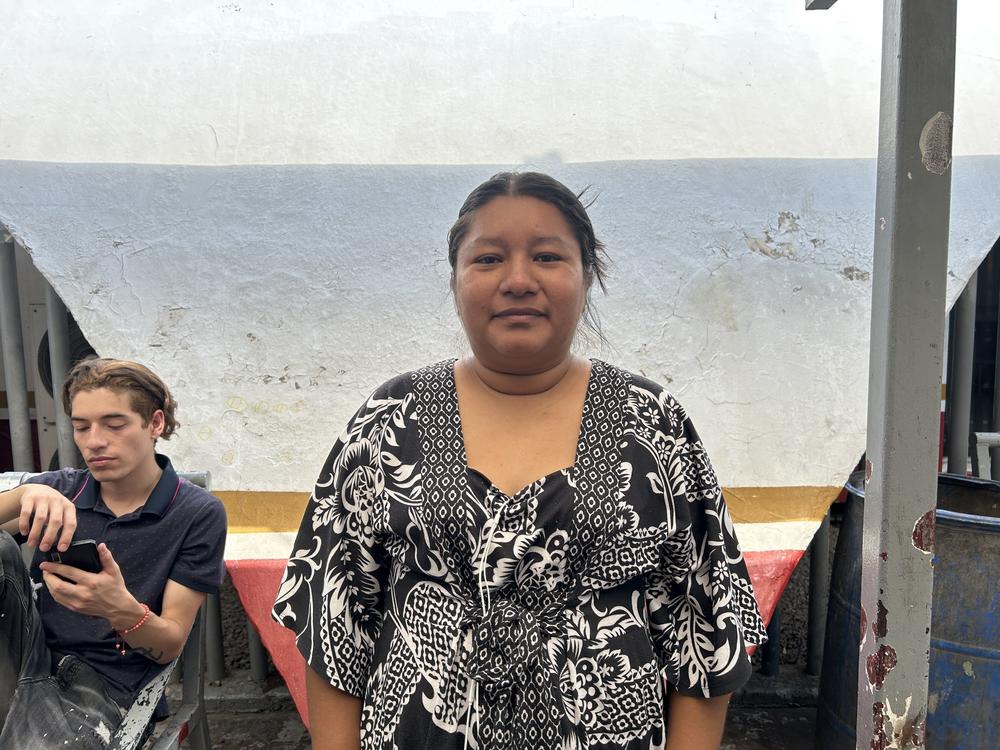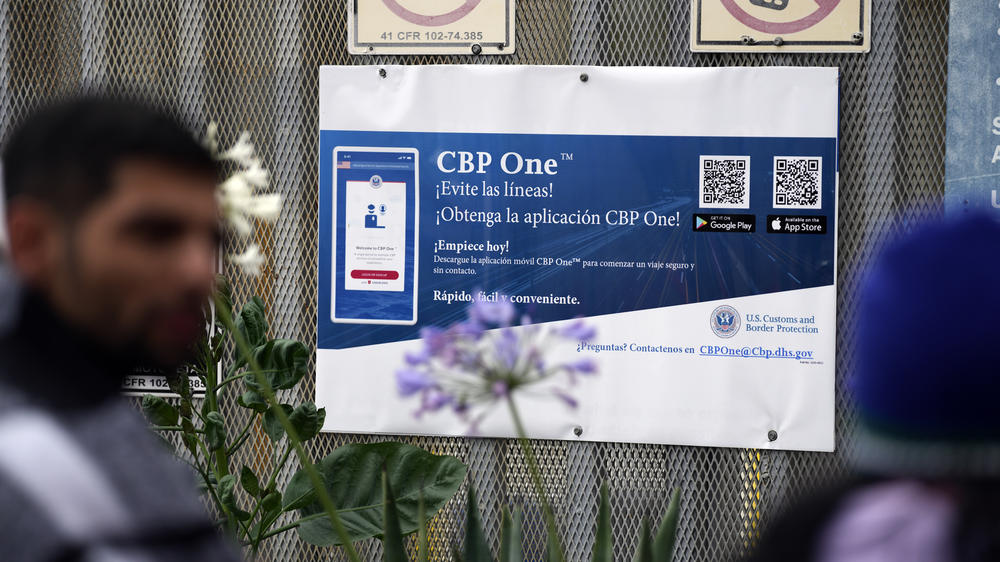Section Branding
Header Content
Illegal border crossings are down. One big reason why is now part of a court fight
Primary Content
The number of migrants illegally crossing the U.S.-Mexico border is lower than it's been since the first weeks of 2021 — and the Biden administration says its sharp limits on asylum at the border are a big reason why.
Now the administration's border policies are being challenged in court by immigrant advocates and immigration hardliners alike, with a crucial hearing about the new asylum rules set for today in California.
Under those rules, which took effect in May, there is one main legal pathway to seek asylum for migrants who are already at the border: through a mobile app called CBP One. But for migrants who cross the border illegally after passing through Mexico or another country, it's much harder to get asylum.
'I don't have anyone telling me it's going to be OK'
For those migrants at the border, that can mean an agonizing wait for an appointment.
"I want to do things legally right," said Liseth, who traveled alone from Venezuela all the way to Nogales, Mexico. She asked not to use her last name because she doesn't want to endanger her family back in Venezuela.
Those appointments are basically the first step toward applying for asylum — and being admitted into the U.S. while the legal process plays out. Every day, Liseth says, she sees other migrants getting appointments through the CBP One.
But not her. A few weeks ago in downtown Nogales, Liseth said she had been trying for a month to get an appointment through the app — with no luck.
"I feel bad because I'm alone," she said in Spanish. "I feel vulnerable, sad and overwhelmed being here alone. I don't have anyone telling me it's going to be OK, be patient, we will get an appointment to enter the U.S."
Still, Liseth decided it was better to wait for an appointment than to cross illegally — and she's not alone. Up and down the border, roughly 100,000 migrants are waiting in camps and cities, according to a U.S. government estimate, hoping for a chance to seek asylum.
Limits on asylum at the border
The Biden administration credits the CBP One app and the new asylum rules for the sharp drop in illegal border crossings in recent weeks. Last month, U.S. Border Patrol agents recorded just under 100,000 encounters between the ports of entry, the lowest total since February 2021.
"We are allowing migrants to claim asylum but placing what we believe are some common sense conditions on it," Blas Nuñez-Neto, a top immigration official at the Department of Homeland Security, said in an interview with Morning Edition in May.
The Biden administration is trying to restore access to asylum at the border, Nuñez-Neto said, after the Trump administration tried to block it altogether. DHS is allowing roughly 40,000 migrants per month to make appointments through the CBP One app.
"What we are really trying to do here is incentivize migrants to use safe, lawful and orderly pathways," Nuñez-Neto said. "But also, you know there has to be a consequence at the border for individuals who continue to cross irregularly despite having these options available to them."
But the administration's asylum policies are drawing criticism — from both ends of the immigration debate.
Immigrant advocates sue to block asylum rules
Immigrant advocates say the new asylum rule is unlawful because migrants are allowed to seek asylum anyway on U.S. soil. They argue it's creating a bottleneck by forcing migrants to use the CBP One app.
"It's really putting people between a rock and a hard place," said Chelsea Sachau, a lawyer with The Florence Immigrant & Refugee Rights Project, a nonprofit in Arizona that's helping migrants to understand the new legal landscape.
"It's not respecting their rights to seek asylum. It's not giving them a fair process," she said.
National advocacy groups filed a legal challenge to the rule the day it took effect. They say it's all but identical to a Trump administration policy that was blocked in court, and they've gone back to the same federal judge in Oakland, California who ruled in their favor before.
The Biden administration disputes that this rule is the same as the Trump-era version, because it's paired with new legal pathways.
Immigration hardliners see 'a shell game'
That's not the only legal challenge the administration's new border policies are facing. There's also a case brought by Republican-led states, arguing the Biden administration is letting too many asylum-seekers into the country.
"When you report that illegal migrants, the numbers are down — that's a shell game. It's like a magic trick," Republican Rep. Clay Higgins of Louisiana said at a hearing in June.
Higgins and other immigration hardliners say the Biden administration is using the CBP One app to put a new name on the same flow of migrants as before, creating a so-called legal pathway that Congress never intended.
"This executive branch has redefined what an illegal entry is," Higgins said.
The White House insists it's on solid legal ground. But homeland security officials acknowledge that legal fights over asylum are likely to continue, even if the judge in today's hearing ultimately rules in their favor.
Copyright 2023 NPR. To see more, visit https://www.npr.org.


